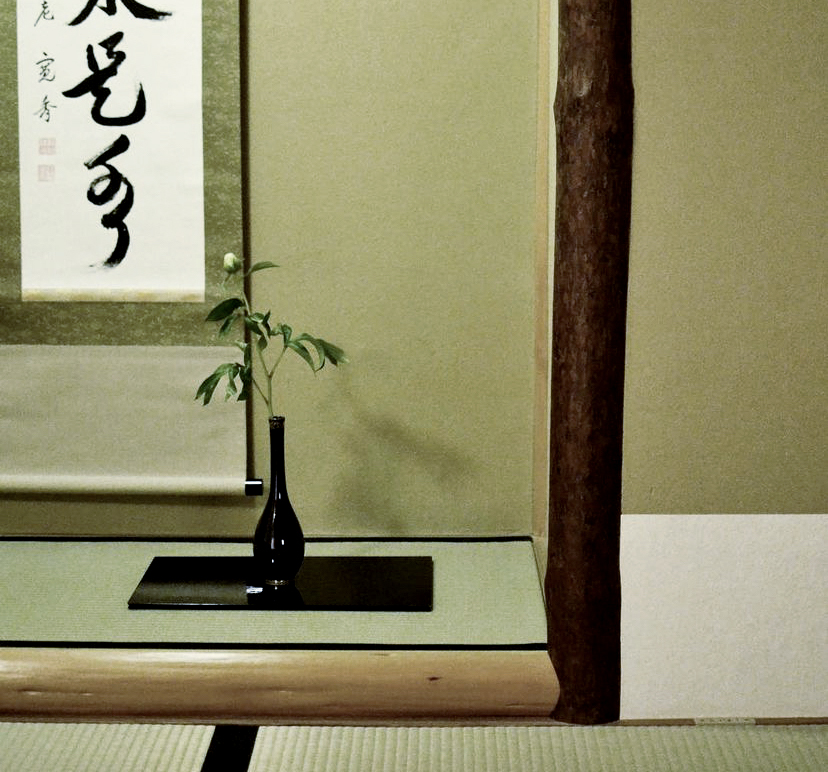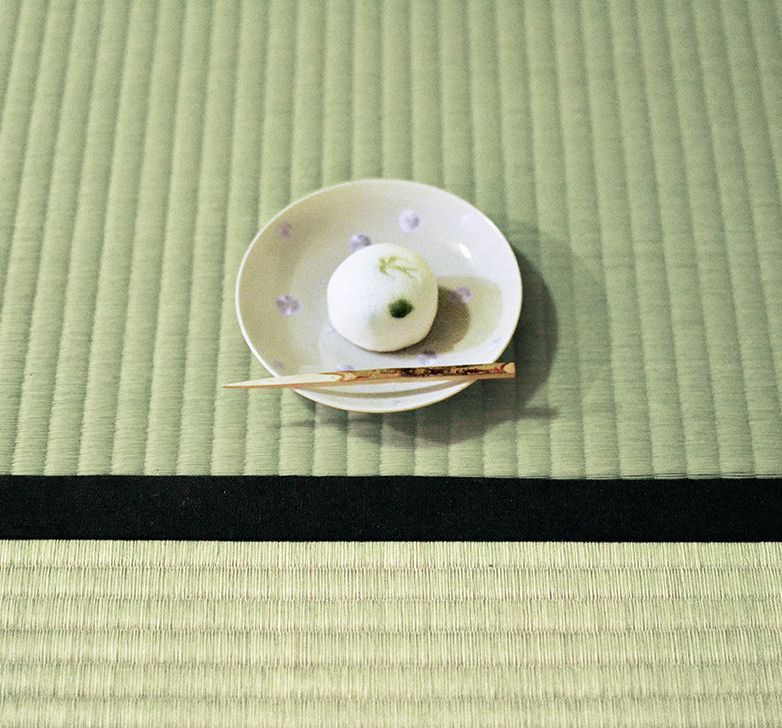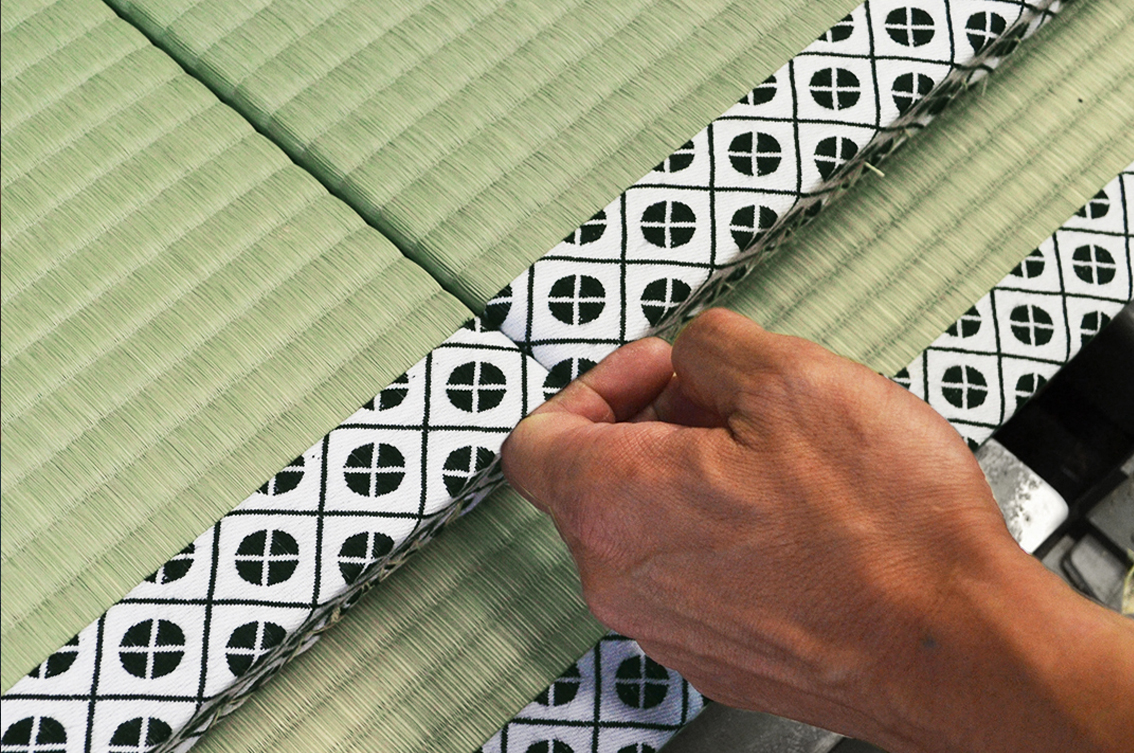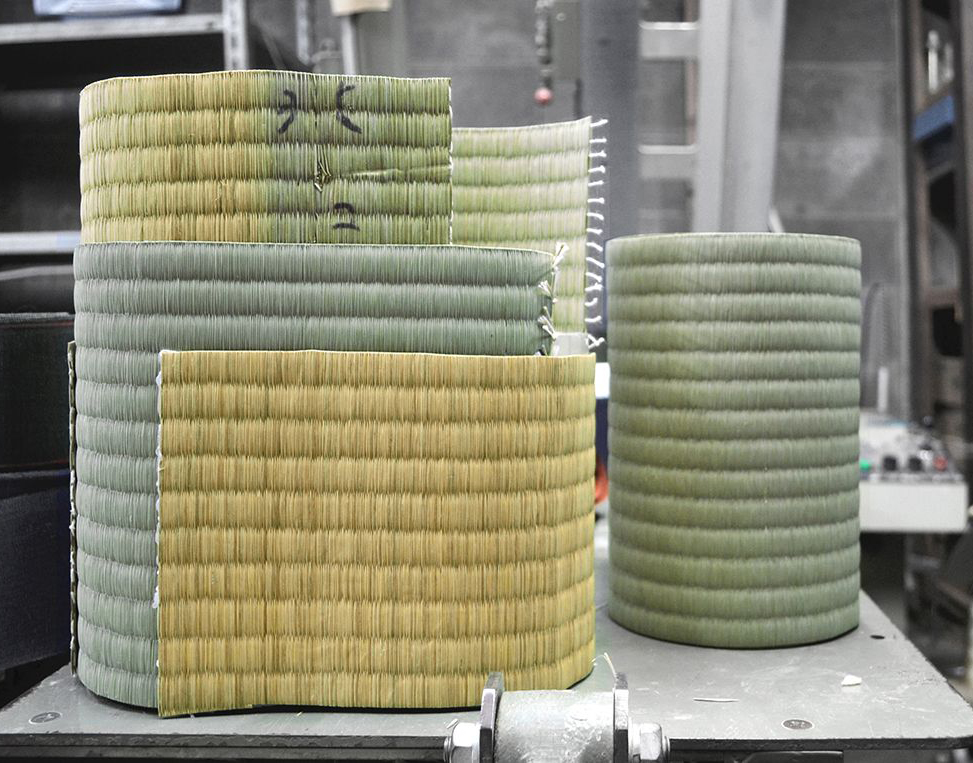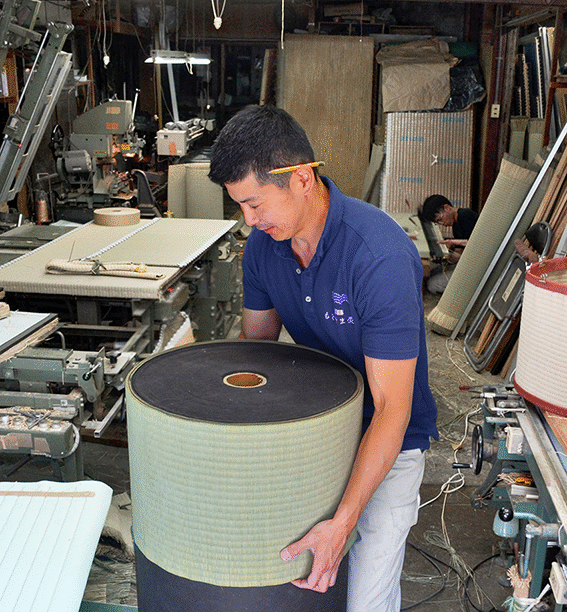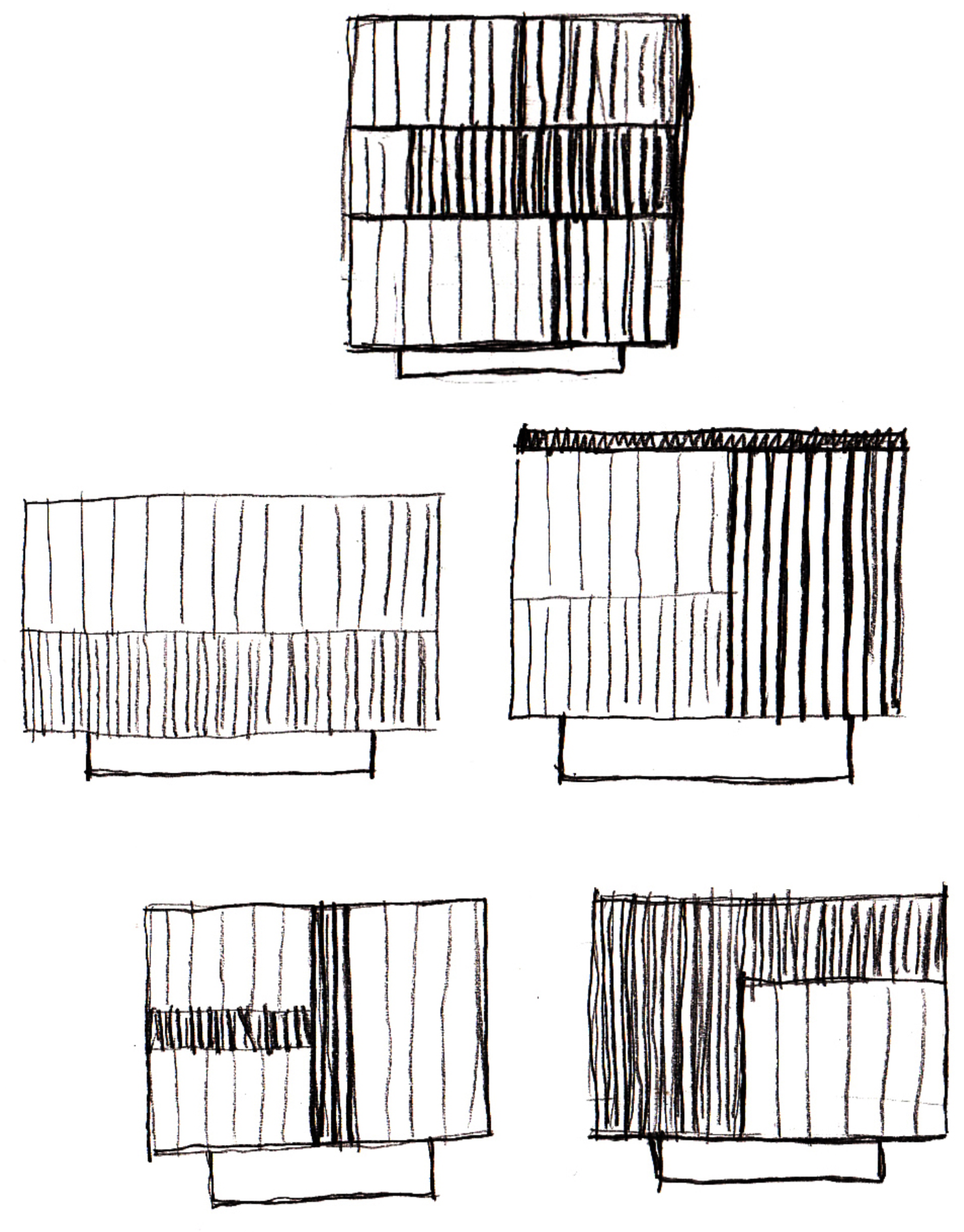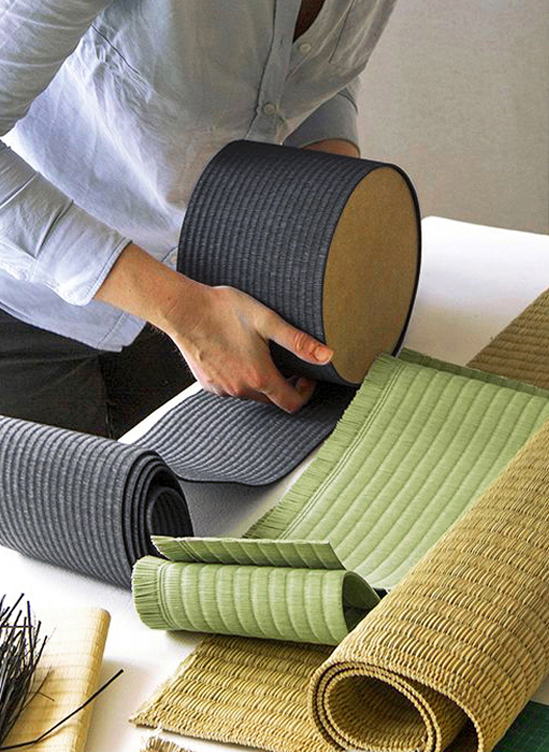TATAMI,
has a central place in the daily life of the Japanese. It is present as a floor covering for their interiors, and has thus become a unit of measurement that defines the size of the rooms (room of three tatami mats) and therefore of the dwellings. It is also an iconic element of the tea ceremony, a very codified ritual, during which we count the “mountains” and the “rivers”, terms used to describe the weaving pattern that covers it.

